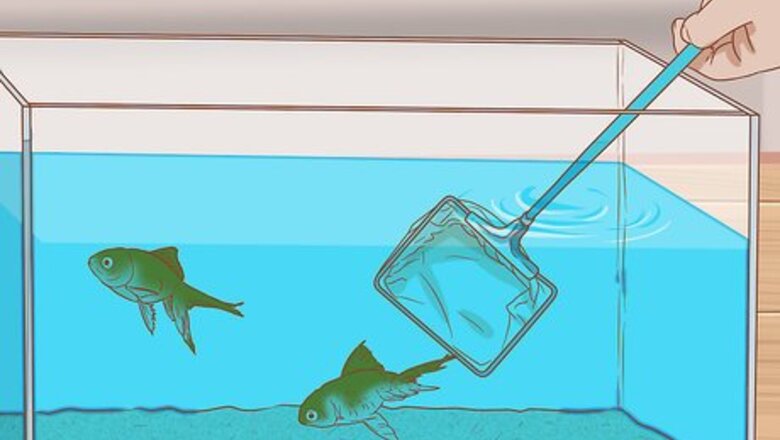
views
Emptying the Tank
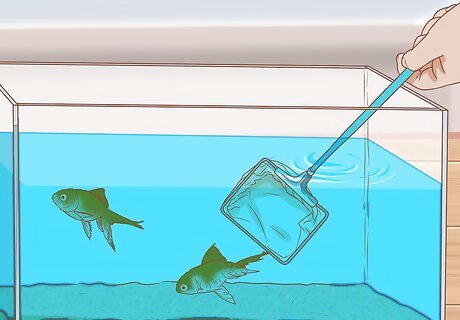
Place the fish in a separate tank while you sanitize the dirty tank. It is important to remove the fish before you sanitize the tank to avoid them being harmed from the chemicals. Use a fish net to slowly scoop the fish out of the tank and transfer them to a clean holding tank. Ensure that the holding tank is filled with conditioned water that is the right temperature for your fish. Purchase a fish net from a pet shop. Move the net slowly and smoothly to avoid startling the fish. Transfer 1 fish at a time. Search online to find the ideal water temperature for your fish if you are unsure.
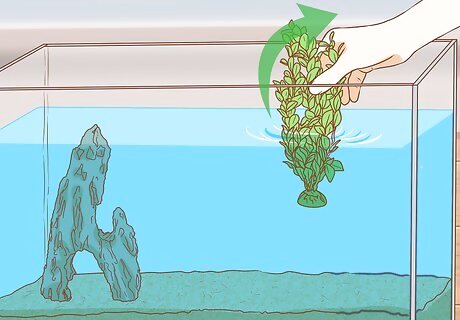
Take out all the removable items from the tank. Transfer all the decorations, plants, and rocks out of the tank. This makes it easier to clean the bottom of the tank and ensures that it is properly sanitized. Don’t worry about removing any items that are attached to the tank. It's a good idea to submerge the tank decorations in a solution of 1 part water and 3 parts vinegar for one hour. Rinse them, let them dry out and rinse again.
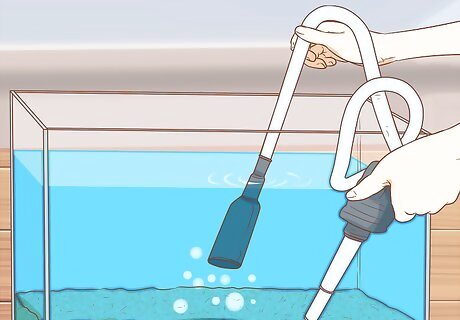
Drain the fish tank with a bucket. Dip a sturdy bucket into the water and then throw the old water down the drain or into the garden. Gently tip the tank over to remove any remaining water. This is best done outside over grass. If you have a very large tank, use a syphon hose to drain the water.
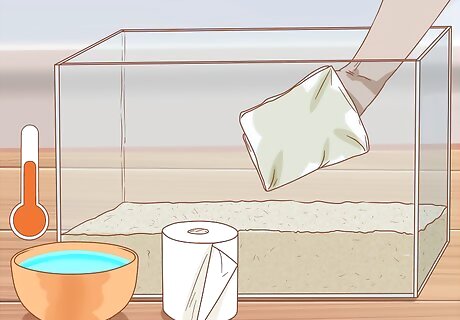
Wipe any dirt or dust out of the tank with warm water and a paper towel. Dip a paper towel in warm water and then squeeze it to remove any drips. Wipe the sides of the tank first and then the bottom. Continue to wipe the tank until all the debris are gone. If you find that your paper towel is simply spreading dirt around the tank, throw it away and use a new one.
Using Bleach
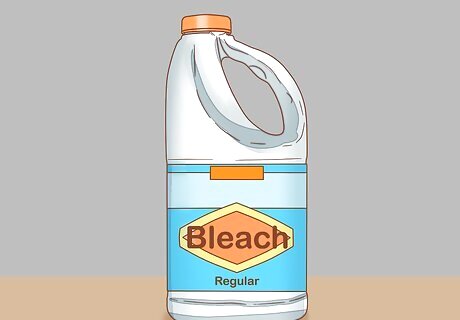
Purchase a bleach that doesn’t have detergent in it. It is really important to avoid bleaches that contain detergent, as the chemicals in the detergent can be fatal to fish. Avoid any bleaches that advertise that they are “mixed with detergent.” Look for a bleach that says “regular” or “household” bleach on the packaging. Purchase bleach from a supermarket or cleaning store.
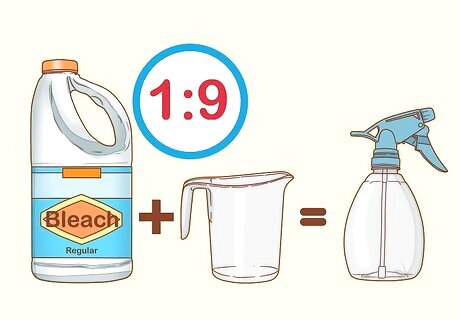
Mix 1 part bleach with 5 parts water in a spray bottle. For example, measure 1 cup (240 mL) of bleach and 5 cups (1,200 mL) of water into the bottle. Once you have measured the water, tightly screw on the lid of the spray bottle, and then shake it vigorously for 10 seconds to combine the liquids.
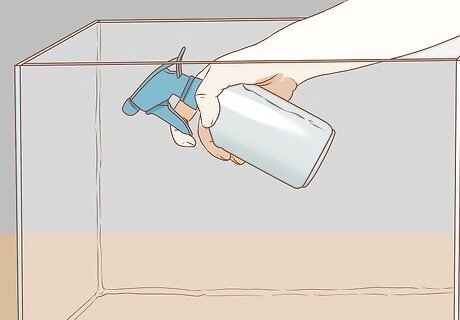
Spray the diluted bleach solution over the tank and decorations. Place the removable items onto a bleach-safe surface and then spray them with the bleach solution. Liberally cover all of the surfaces of the tank with the sanitizing solution. Make sure to spray inside any items that are attached to the tank. Avoid spraying the bleach solution over grass, as the chemicals can kill plants. Concrete is an ideal bleach-safe surface. Another option for the decorations is to submerge them in the diluted bleach solution for one hour. Rinse them, let them dry out and repeat the process two more times to remove all traces of bleach. If you want, you can leave the decorations submerged overnight.
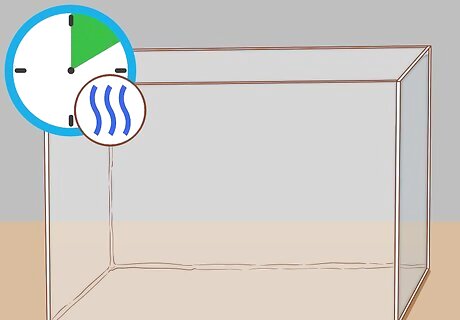
Leave the bleach to kill the bacteria for 10 minutes. Avoid leaving the bleach on the tank for more than 15 minutes, as the chemicals can corrode the tank. Set a timer to help remind yourself when 10 minutes have passed. Keep children and pets away from the bleach solution, as the chemicals are harmful if consumed.
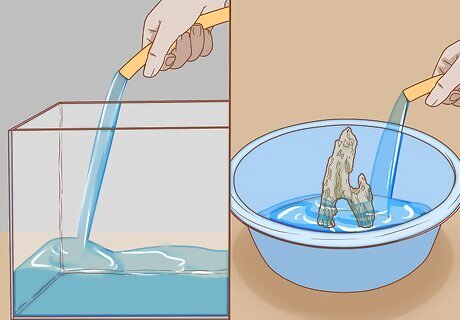
Rinse the fish tank and removable items twice. Use a hose to fill the tank with water and then empty the tank. Repeat this process again to remove any remaining bleach residue in the tank. Submerge the removable items from the tank in clean water and then shake them to remove any drips. Repeat this process again to ensure they are completely clean. If you don’t have a garden hose, fill the fish tank with water in the bath. Submerge the items that were cleaned with the bleach solution in a bucket with a dechlorinator before adding them back to the tank.
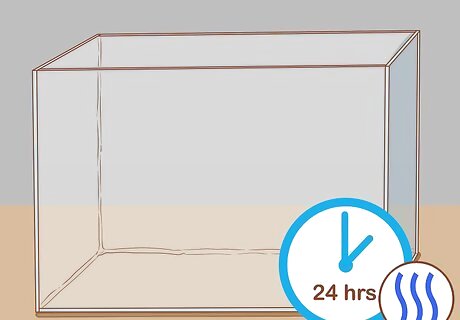
Let the fish tank air dry for 24 hours. This allows time for any remaining bleach in the tank to break down into harmless by-products. Place any removable items beside the tank to dry. Place the tank in a place where it won’t be knocked over by pets or children.
Refilling the Tank
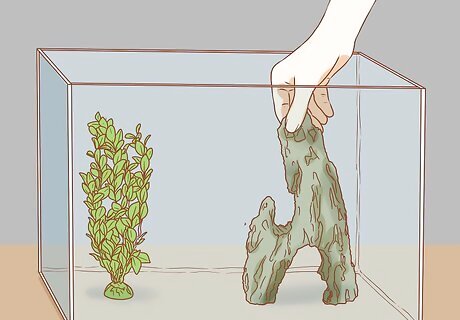
Place the removable items back into the tank. It is much easier to put the items back while the tank is empty. Reattach any filters, place the rocks into the base of the tank, and add the decorations to the aquarium. If you have any new items to place into the tank, this is a convenient time to do so. Avoid adding any objects to the tank that aren’t new or sanitized as this can contaminate the aquarium.
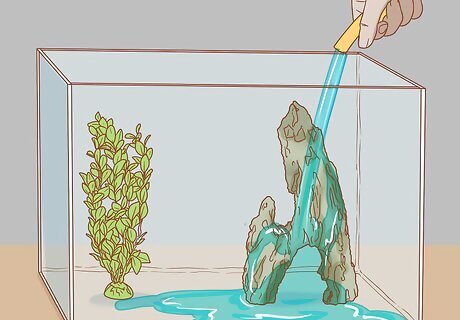
Fill the tank up with water and set the thermostat to the correct setting. Use a hose or buckets to refill the tank to the “max” line. Set the thermostat to the ideal temperature for your fish. Avoid recycling the old water, as this won’t be sanitized.
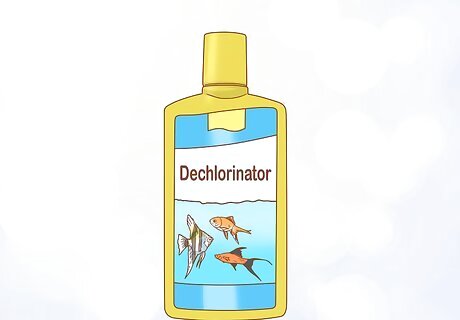
Add a dechlorinator and other necessary conditioners to the water. This removes the chlorine and other chemicals in the water that can harm the fish. Read the back of the packet to determine how much dechlorinator to add. Purchase a dechlorinator from a pet shop. Most dechlorinators require about 1 drop per 8 litres (2.1 gallons) of water. However, it is important to read the bottle for the exact dosage, as the amount varies between brands.
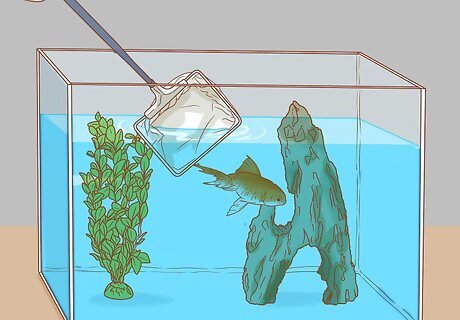
Place the fish back into the tank using a wet fish net. Dip the net into the water to wet it. Gently scoop the fish out of the holding container and place them into the new tank. Avoid making any sudden movement, as this can startle the fish.




















Comments
0 comment